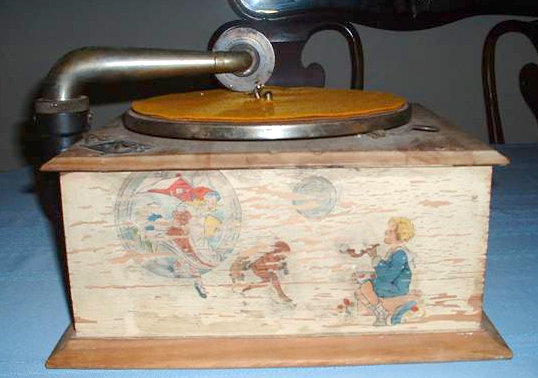The Victor-Victrola Page

Special Finishes & Custom Cabinets
Victor offered a wide variety of special finishes and custom "Art Case" options for their premium Victor and Victrola models. Most of these were considered special-order machines, but some were offered in the company's catalogs, and would be carried in-stock by the better retail stores. It is impossible to include the scores of available choices, but a few are covered here to give the reader an idea of what was available.
Several things are important to note about Special Finishes: 1) these machines tended to be very fragile, and often did not fare well after being stored in an attic or damp basement. Therefore, it is common to find these examples with badly deteriorated finishes and, 2) many "aftermarket" services existed in the early years of the 20th Century which would modify a Victor product to upgrade the appearance with a new finish. In some cases, this work was quite good and almost appeared to be a "factory" job, and in other cases the work was sloppy and resulted in a marginal appearance.
Collectability: As a rule of thumb, any machine with a factory-produced special finish will be more valuable than one that was modified/upgraded by an aftermarket service. However, Victors or Victrolas which were modified with high-quality aftermarket work will usually be considered more collectible than an unmodified (standard) machine. Machines with marginal-quality upgrades rarely have much value.
Vernis-Martin Finish (below)
The Vernis Martin finish option became available in 1909, and featured hand-paintings over gold leaf. This was listed in most of the Victor catalogs up until 1920. The VV-XVI version of this option had a retail price of $400.00, twice as much as a standard XVI in mahogany or oak. This finish was also available on the VV-XVII, VV-XVIII and VV-130 models. A few examples have been noted on other models as well.
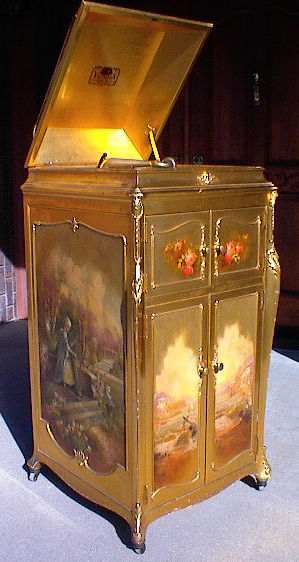
Lacquered Finish (below)
A variety of factory Black Lacquered Finishes were available, typically with Japanese decorations. VV-130 models offered this option in the catalogs, but many were produced via special-order.
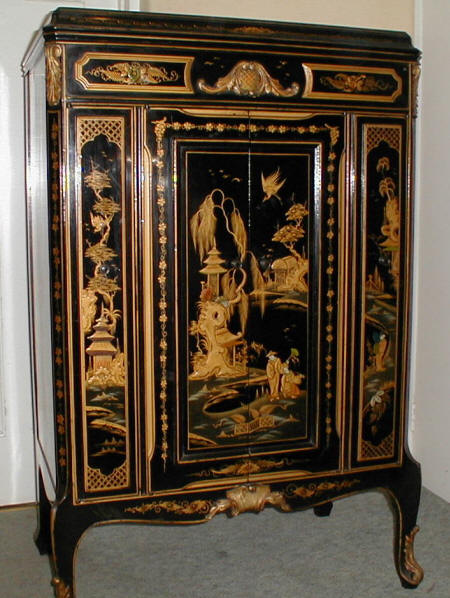
Special-Order Wood and Cabinets (below)
There were scores of custom wood veneers and finishes that were available over the years, including rosewood, ebony, teak, mother-of-pearl, and a host of others. Some were offered with the line of "Period Victrolas", which were expensive semi-custom models that were produced by the factory from 1917-1921. Many of these finishes are quite rare and highly desirable. In addition, if you had the financial means, the "Victor Art Shop" would custom-make a Victrola to your specifications (to match furniture or decor). These were designated by an "SP" prefix to the model number. Some incredible examples have turned-up over the years, indicating the skill and capabilities of Victor's cabinet-building operations.
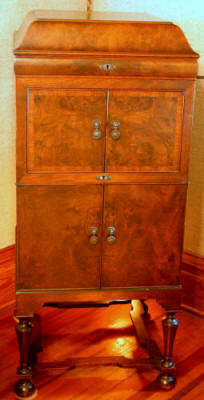
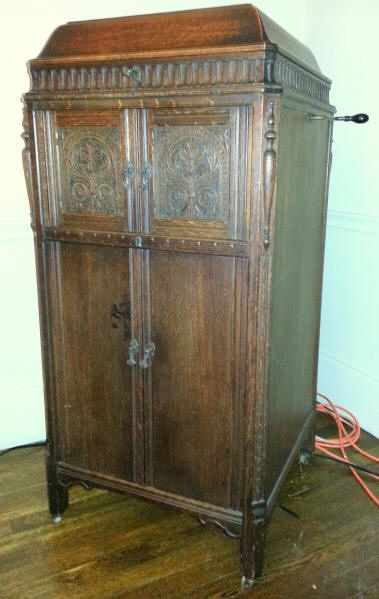
Aftermarket or Factory Special? (below)
As stated above, a number of aftermarket services were available to upgrade a common Victrola with a fancy painted or reworked finish. Some are spectacular, and are considered very collectible. In other cases, the quality of rework wasn't the best, as can be evidenced in the details of the finish.
One easy way to identify an aftermarket modification or upgrade is to closely examine the under-lid decal. On true Victor factory examples, the decal should always be placed OVER the painted or special finish, such that it is visible on top of the finish (below left). If the decal is missing (painted-over), or if it is "blocked-out" with the special finish all around it, then it is certainly an aftermarket job (below right).
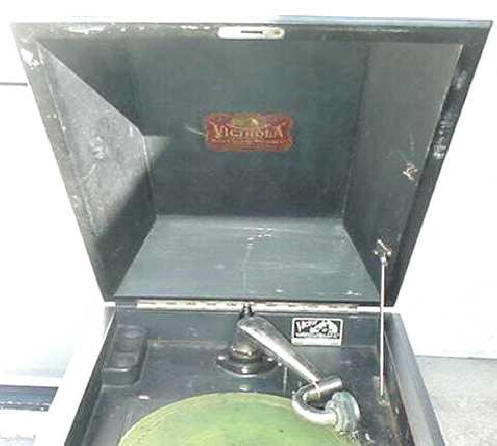
Another way to spot aftermarket finish jobs is to make sure that the entire horn opening, including UNDER the horn slats, has been completely refinished. The paint finish should be smooth and drip-free. The insides of the doors should match the paint under the lid. In most cases, if upgrade rework was performed one hundred years ago, the age should be evident on the finish (e.g. crazing or cracking). Newer upgrades will rarely be considered desirable by collectors today. A few examples of excellent aftermarket upgrades are seen below.
Basic Machines with Non-Standard Wood or Finishes (below)
On the other end of the spectrum, common Maple and Ash were frequently used on trim and cabinet pieces of some of the lowest priced Victors and Victrolas. These woods usually have a very "washed-out" grain and non-distinctive appearance. In some instances, pine was stained to look like mahogany as is the case on the low-cost VV 1-1 (right). There is minimal grain contrast on these cheaper wood cabinets. Low-cost decals were also used on some machines intended for children. Portable "suitcase" machines were often painted with lively colors.
